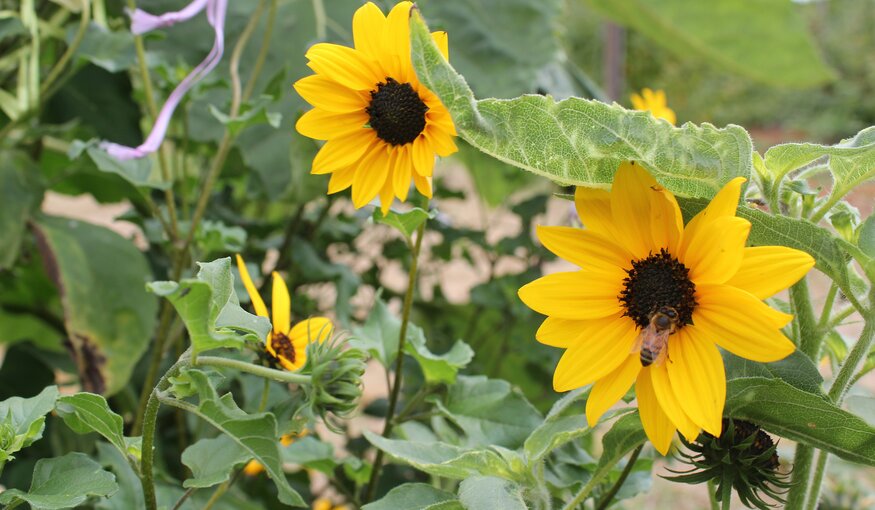Threatened Wild Sunflowers

2 December 2014
The line of cars was so thick that Hill County farmer Rodney Schronk couldn’t get into his field of sunflowers. Hordes of rubber-neckers stopped along Interstate 35W near Hillsboro were taking photographs and walking through the fields to get a close-up look at the rows of tall, yellow flowers.
Because they can thrive in dry weather, the bright and bold flowers are popping up in parts of North Texas as farmers realize they’ll grow when other crops won’t. In the last five years, the number of acres planted in Ellis, Hill and Navarro counties has grown from about 2,000 to about 24,000.
The Fort Worth Star-Telegram
USA, 23 June 2013
The sunflowers popping up in north Texas are just a tiny addition to the 63 million acres – and counting – planted each year in more than 70 countries. Sunflowers are well known to farmers for producing in dry, hot and infertile soils, making them an increasingly good bet in climate change impacted places like Texas. While sunflowers were domesticated 5,000 years ago in the southwestern USA, they are today important in many developing countries. The oily seeds of the attractive flowers constitute an important source of fat and calories for many diets, and provide ample linoleic acid, a key omega-six fatty acid. However, as the climate changes, drought, heat and soil salinity are pushing the crop to its limits.
Modern varieties of sunflowers with greater salt tolerance, better pest and disease protection and healthier oil have been bred with help from the large genepool of wild sunflower relatives, and more answers are surely out there. Yellow wildflowers of the Helianthus genus are a common sight throughout North America. But some of the most important diversity, often growing in extreme and precarious environments, is in trouble. The Crop Trust and its partners in the Adapting Agriculture to Climate Change: Collecting, Protecting, and Preparing Crop Wild Relatives project have assessed 38 wild relatives across the continent and produced a map of the most significant gaps in collections to guide conservation efforts. The results suggest that half of all sunflower relatives are high priority for collecting.
One of these, the Pecos Sunflower, is not so far away from Rodney Schronk’s farm. It is listed as a threatened species under the US Endangered Species Act and can only be found in six small areas of its native salt marsh in Texas and New Mexico. It is outcompeted by exotic plants, disturbed by livestock grazing and very vulnerable to changes in the marsh landscape. This species is especially important to breeders precisely because it thrives in such a saline environment. Salt-impacted soils are a steadily creeping problem in countries dealing with climate change. Tolerant hybrids developed using the Pecos Sunflower promise a 25% better harvest in these salty soils.
In partnership with the Crop Trust, researchers at the University of British Columbia in Canada are pre-breeding wild sunflowers to bring more of these species’ amazing survival skills to farmers’ fields. Pre-breeding is the process of preparing wild diversity for use in modern breeding programmes by identifying the most desired traits, linking these traits to sequences in the plant’s DNA, and crossing these into new lines that do not suffer from the weedy characteristics of the wild parents. These resulting lines, carrying diversity not seen in cultivated sunflowers for thousands of years, will be passed on to breeders around the world for evaluation trials.
Categories: Crop Wild Relatives, Climate Change
